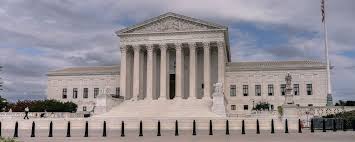The Supreme Court is the most powerful and influential tribunal in America, its rulings shaping politics and policy decisions for decades to come. As part of our system of government, its decisions serve as the last bastion of constitutional rule and an integral component.
The Constitution sets the power and limits the authority of the Supreme Court, known as ‘checks and balances,’ as part of an effective democratic system. They ensure that court decisions don’t unduly reflect popular majorities or unconstitutional behavior by restricting its power or restricting it based on popular majority opinions.
Article II, Section II of the Constitution establishes the Supreme Court as an independent institution tasked with upholding and interpreting the United States Constitution. It also stipulates the selection of Chief Justice and Associate Justices by nomination from President to Senate by their respective presidents; Chief Justices are usually appointed for life terms but can be removed if impeached or found guilty of high crimes and misdemeanors by either body of government.
Notable decisions from this court include overturning state anti-sodomy laws and legalizing same-sex marriage across the nation – transformative cases which have forever altered lives of Americans.
One of the Supreme Court‘s primary roles is protecting civil rights and liberties for women and minority populations, such as protecting their civil liberties under the Constitution in new situations and whether to uphold or strike down laws and executive actions. This requires it to make constant decisions relating to how best to apply the Constitution to these situations as circumstances evolve, making decisions regarding application of its principles to new situations that come up from time to time.
The Constitution grants the Supreme Court jurisdiction over various types of cases, including lawsuits between two or more states (original jurisdiction), appeals involving ambassadors or public ministers (appellate jurisdiction) as well as any others that involve constitutional or federal law issues. Furthermore, this Court is charged with interpreting such important documents as the Constitution itself.
As soon as a member of the Supreme Court retires or dies, Congress may remove his or her seat and replace it with an associate justice who enjoys equal voting rights with their chief. When this occurs, Senate is responsible for nominating someone to fill this vacancy through hearings in its Judiciary Committee before final approval by all Senators is given for that person to join their ranks.
Congress may modify the number of Supreme Court Justices; currently there are nine Justices; however, this number has changed throughout history.
There is no text in the Constitution limiting the size of the Supreme Court, though Congress has modified its size over time. In 1807, six justices were reduced from seven justices; later that year it was expanded again to seven justices.
As opposed to other branches of government, the Supreme Court does not face electoral or campaign pressures when making rulings, thus shielding its decisions from political influences that might sway majority opinion. Furthermore, since justices serve lifetime terms they are unlikely to face temptations to leave or impeachment proceedings and conviction.

